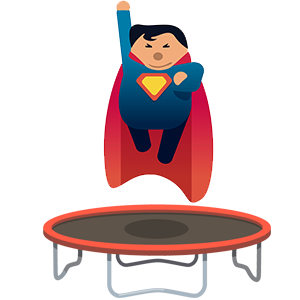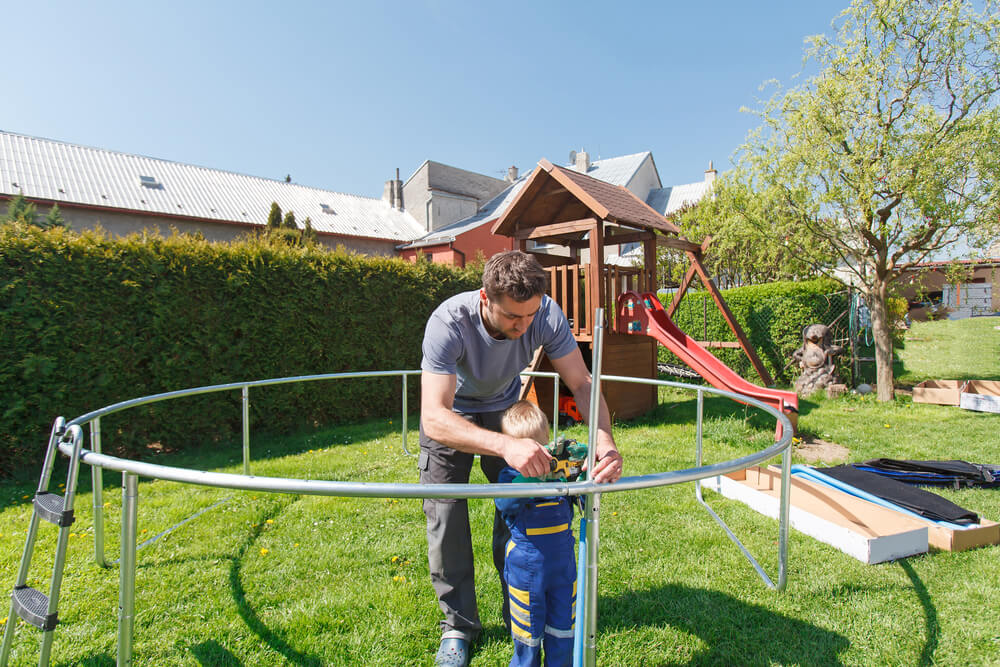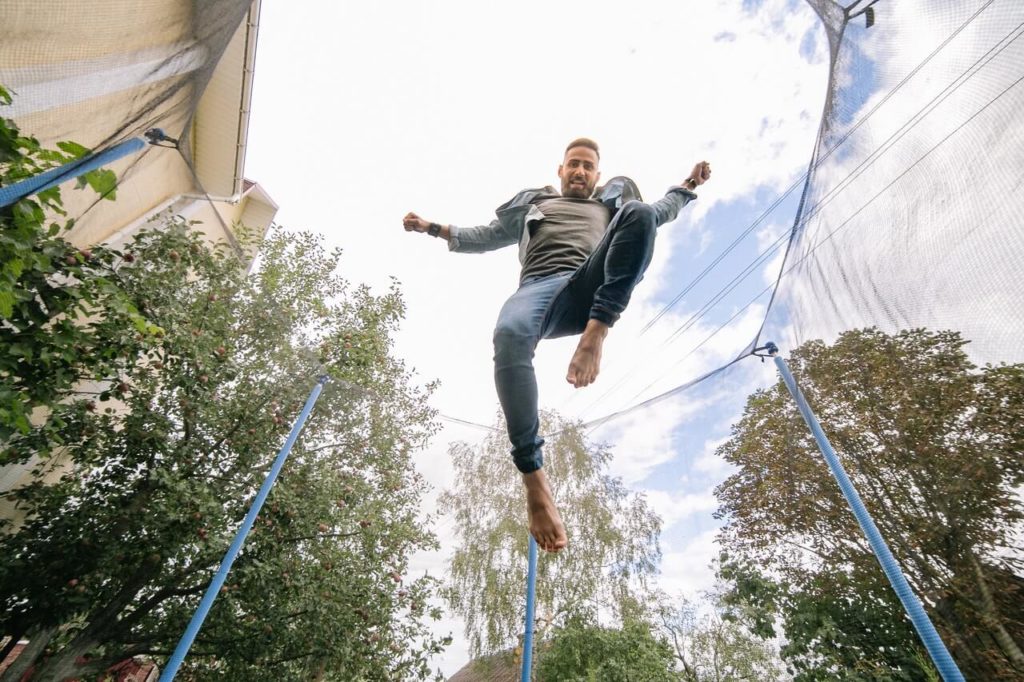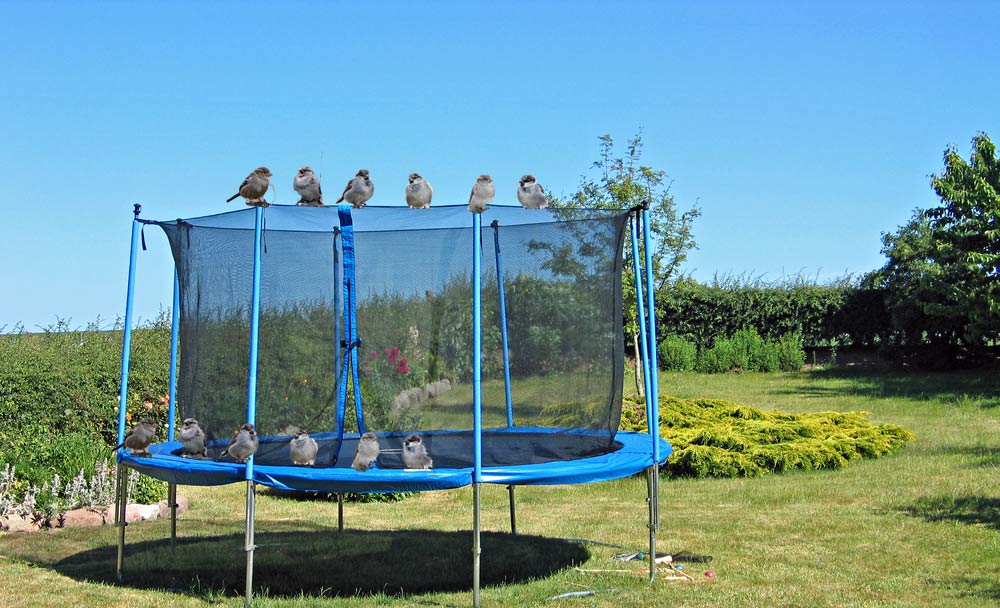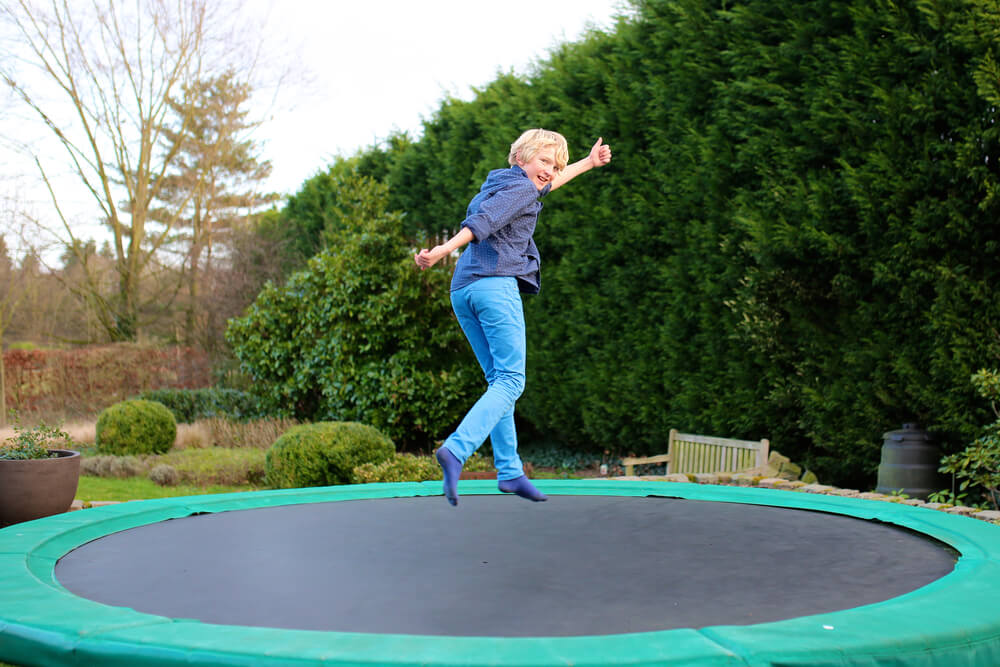It can be challenging to differentiate between a rebounder and a trampoline. However, these two can serve a similar course despite their differences.
First, they can be used for recreational purposes and workout equipment. Therefore, I’ll walk you through the various rebounder vs trampoline differences, their pros and cons, and the frequently asked questions about the same.
Stay with me to learn more!
What is a Rebounder?
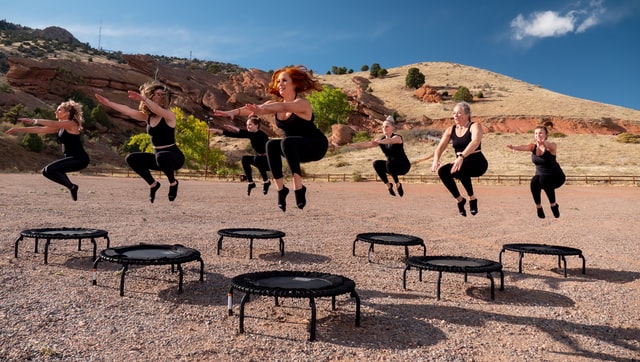
Due to the greater possibility of bouncing, you will bounce higher or further than you would on a normal surface when you jump on a trampoline.
Generally, rebounders are safer than traditional playground equipment since they are lower to the ground and eliminate the possibility of engaging in possibly hazardous bouncing or flipping.
What is a Trampoline?
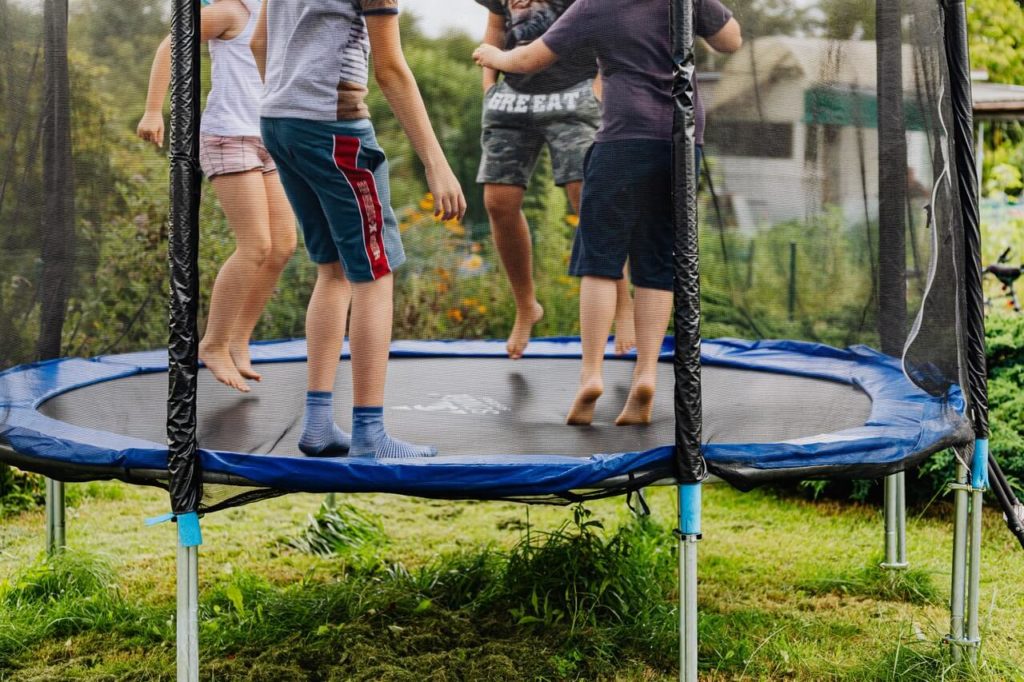
A trampoline is a piece of equipment with fabric stretched and joined to a steel frame to provide a surface for jumping. The trampoline may also be used for flips and somersaults when it is large enough. Both recreational and competitive use is acceptable for this activity.
A recreational trampoline is typically constructed from a water-resistant canvas. You can get them in various sizes and designs.
It is unlikely that the trampoline will be portable unless it is already of very modest size. Also, trampolines designed for recreational use are frequently installed in private residences, children’s playgrounds, school gymnasiums, and adult fitness clubs.
Like trampolines, rebounders are available in circular, rectangular, and even trapezoid shapes. You may also get them in several colors, making them suitable for almost any aesthetic or preference.
Types of Rebounders
Regrettably, not all rebounders were made with the same quality. These exercise machines may be broken down into two distinct categories: quality and low-quality/low-cost models.
In this context, cheap refers not to the softness or firmness of a rebounder or even its price. Rather, it refers to the quality of the material utilized to create the rebounder.
Low-cost rebounders are often made with lower-quality bungee cords or steel springs than more expensive models. When you bounce on them, they tend to sink beneath you, leaving your back and knees in a worse condition than they were before.
On the other hand, high-quality rebounders are frequently fabricated using superior quality cords or steel springs. These can be steel springs or adjustable cords.
Some of these springs are constructed to have a lifespan of two or more years, or perhaps the entirety of the machine they are used in.
Types of Trampolines

Since the 1930s, when the first modern trampoline equipment was manufactured, the industry of trampolines has gone a long way. These amusing items are available in various colors, designs, and contours.
The primary distinctions between trampolines are between those used for leisure and competitive jumping.
Individuals typically buy trampolines designed for recreational use so that they may utilize them in their own homes. The available shapes include hexagonal, square, rectangular, oval, and circular.
On the other hand, trampolines designed for competitive jumping are frequently rectangular and are acquired for use in sports.
To resist larger weight during competitive jumping, they are fashioned from a durable fabric and are kept together by multiple strong coils.
Size
A rebounder is a trampoline that is scaled down to a smaller size. It is frequently utilized for the sake of fitness and weight reduction. Rebounders are also known as fitness trampolines or mini-trampolines, and their bounce is significantly less than that of ordinary trampolines.
On the other hand, the primary use of a trampoline is for recreational jumping. Most rebounders are utilized indoors due to their smaller size, making them simpler to install, break down, transport, and store.
The average height of an outdoor trampoline is from 7 1/2 to 16 feet, whereas the average height of a rebounder is around 3 1/2 feet.
Verdict
Trampolines are larger than rebounders, so you can use up some extra space when buying a trampoline.
Health Benefits
Your muscular coordination will significantly improve using either a rebounder or a trampoline. They are especially helpful for people suffering from back discomfort or joint pain.
As if that’s not enough, fitness trampolines are a terrific alternative to consider if you want to walk, jog, or bounce while working out. In contrast to conventional trampolines, several models come complete with a fitness video that features various workout regimens.
Funny enough, using your imagination is encouraged when jumping on an outdoor trampoline. These bigger items typically come with additional attachments that may be purchased separately.
These may feature bounce boards, basketball setups, and tent attachments, among other things. Compared to most rebounders, trampolines are equipped with a safety net, making them an excellent choice for families with small children in the home.
Verdict
Both types of equipment enhance muscular coordination and help you eliminate back pains.
Weight Capacity
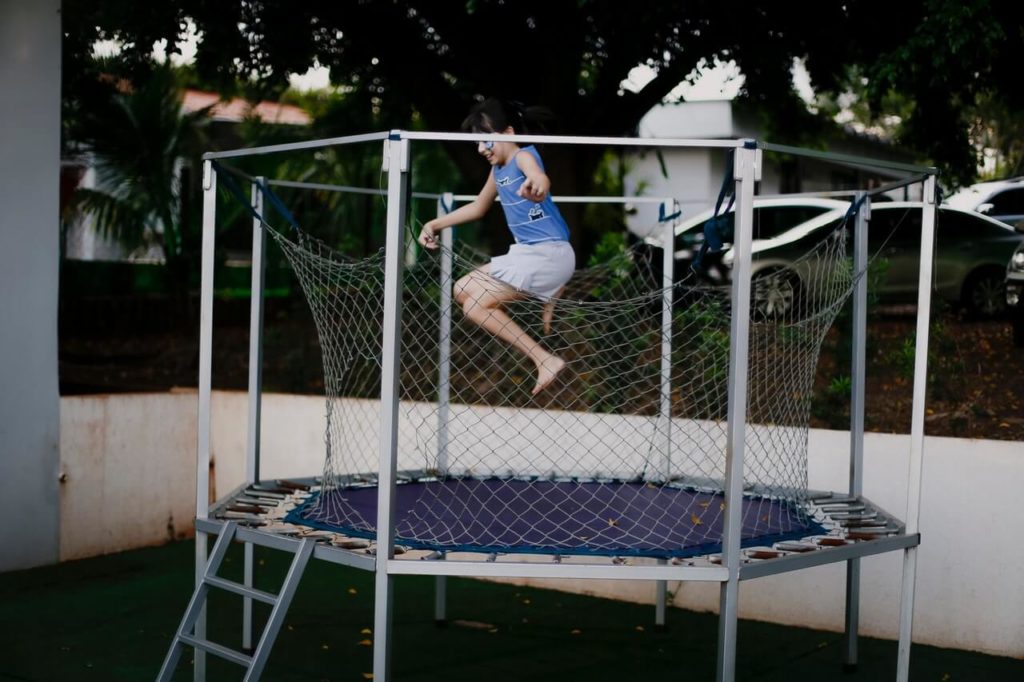
Surprisingly, some rebounders can sustain weights of up to 400 pounds, depending on the manufacturer or the specific model.
On the other hand, standard trampolines typically have a weight capacity ranging from 100 pounds for trampolines of a lesser size to 330 pounds for larger models.
However, in some circumstances, individual trampolines and rebounders can carry much more weight than usual.
Each jumper should only use one type of gear at a time.
Verdict
When you’re working out, you probably need to use a rebounder. On the other hand, if you want equipment for your kids to jump on safely, you can use a trampoline.
Rebounder vs Trampoline: Similarities
- You achieve aerobic activity while jumping on both equipment
- Both pieces of equipment are soft
- They are effective for anyone with back pain and discomfort
Trampoline vs. Rebounder: Pros and Cons
Rebounder Pros
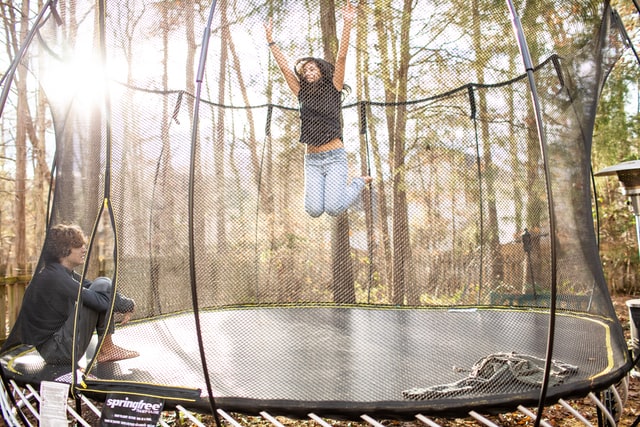
- Improves bone density
- Boosts blood circulation
- Alleviates back pain
- Helps you burn calories
Cons
- Safety is constantly at risk
- High blood pressure
Trampoline Pros
- Increasing endurance
- Helps you look younger
- Prevents stress
- Reduces cellulite
- It’s a fun way to lose weight
Cons
- Trampolines are costly
- You run the risk of sustaining serious injury
Cost
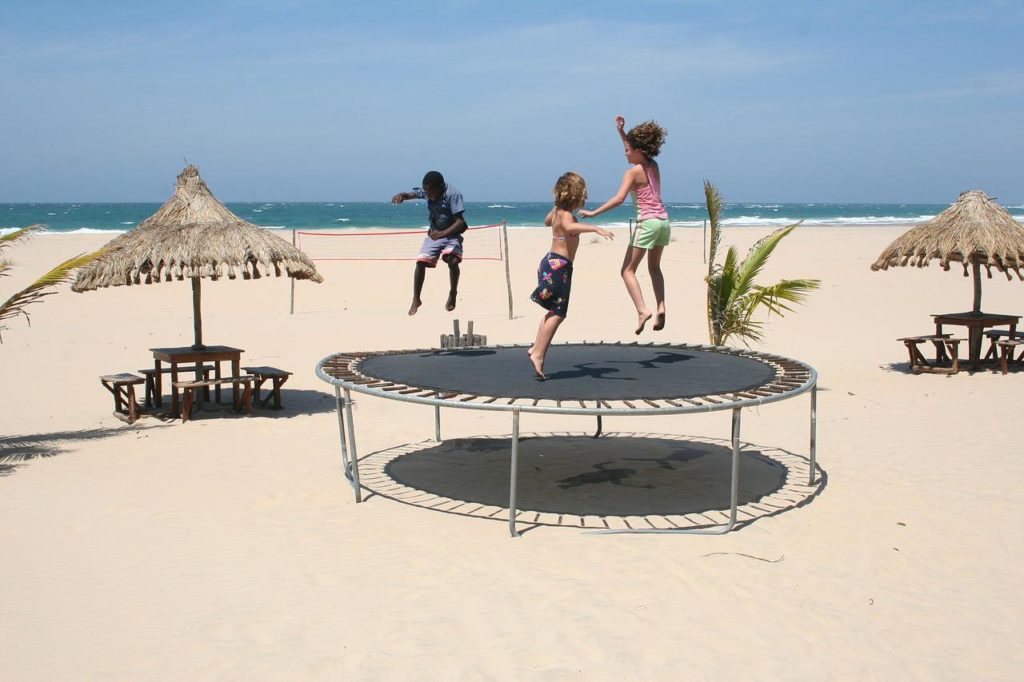
The cost of a rebounder can range anywhere from $30 to $200, up to the $700 mark, depending on the manufacturer and the specific model.
On the other hand, the price of an outdoor trampoline can range anywhere from $100 to $400, while some can be found in the $1,000 price range.
Verdict
While making purchases on a budget, consider buying a trampoline. The reason is you will still get the same benefits as a rebounder.
Frequently Asked Questions
Is it preferable to use a rebounder instead of a trampoline?
Because of the greater possibility of bouncing, you will bounce higher or further than you would on a normal surface when you jump on a trampoline.
Generally, rebounders are safer than traditional playground equipment since they are lower to the ground and eliminate the possibility of engaging in excessive or hazardous bouncing or flipping.
When can’t I utilize a rebounder?
You can’t use a rebounder if you are above 50 years and suffer from any pre-existing medical ailments, like a bad back, joint difficulties, or poor circulation. Before using a rebounder, you should discuss your medical history with a practitioner, particularly if you have a history of heart difficulties or other health issues.
What kind of athletic activity is trampoline jumping?
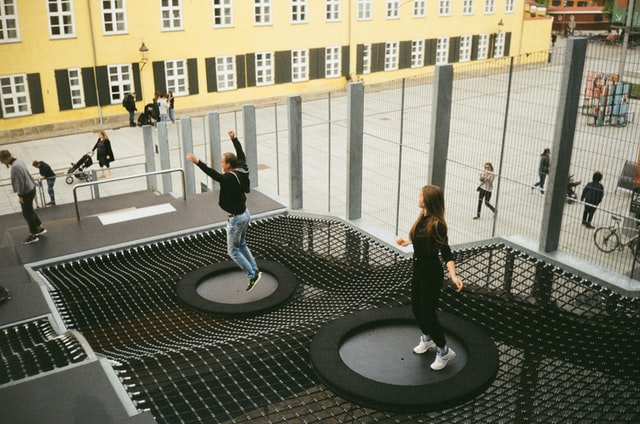
Trampolining, also known as trampoline gymnastics, is an Olympic sport. In trampoline gymnastics, participants perform acrobatic maneuvers while bouncing on a trampoline.
What does a trampoline do for kids?
Jumping can help improve motor abilities. Children who spend time jumping on trampolines have a better chance of developing stronger muscles, bones, and joints than those who do not participate in this activity.
This is excellent for children of all ages, but it may be of particular assistance to kids who have unique requirements.
Are trampolines safe for use by adolescents?
We must start thinking outside the box to attract younger generations, particularly children and teenagers, to participate in physical activities.
Jumping on a trampoline may be an efficient kind of exercise that can aid in burning calories while also providing a cardiorespiratory and endurance-building workout.
Is it a good idea to invest in a trampoline?
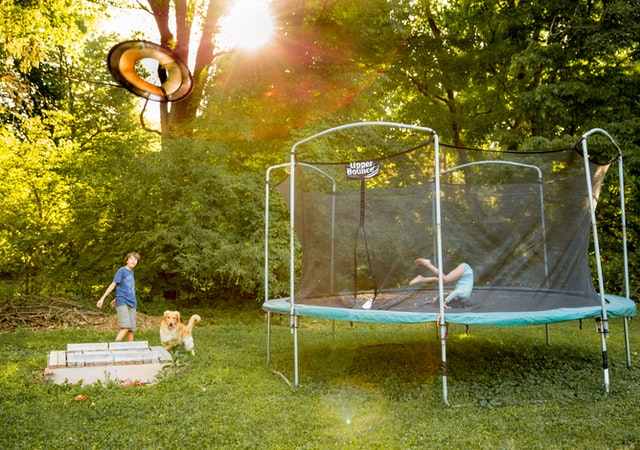
Even though there is a strong demand for trampolines, and they are quite popular, most medical professionals do not advise their use due to safety matters.
Nonetheless, it should be noted that no trampoline is safe and that using any trampoline comes with the inherent danger of harm.
Final Thoughts
Even while you won’t experience the same level of exertion as you would with higher-impact exercises, you will still burn sufficient calories while trampolining. You will get the same benefits from rebounding on the trampoline for 15 minutes as you would from running for an hour.
If jumping is an enjoyable hobby or leisure activity, you must invest in an indoor or outdoor trampoline. On the other hand, singing a rebounder will be more effective if you want to walk, hop, or bounce for fitness.
Despite warning kids against flipping while jumping, they might as well choose not to listen. Therefore, you must get a trampoline net for them as a safety measure.
They can jump and flip with the net as much as they like. The best part is that you don’t have to supervise them.


